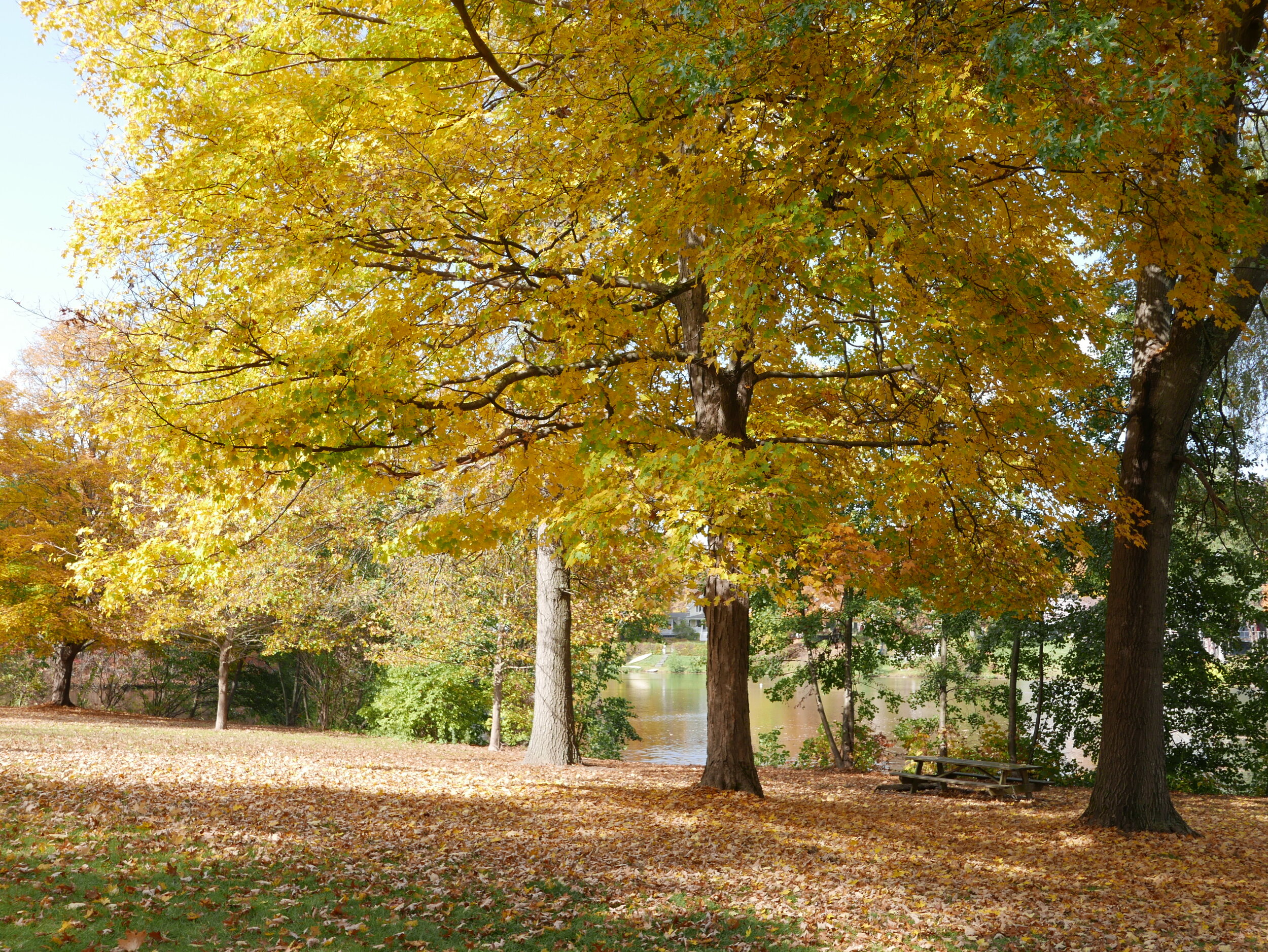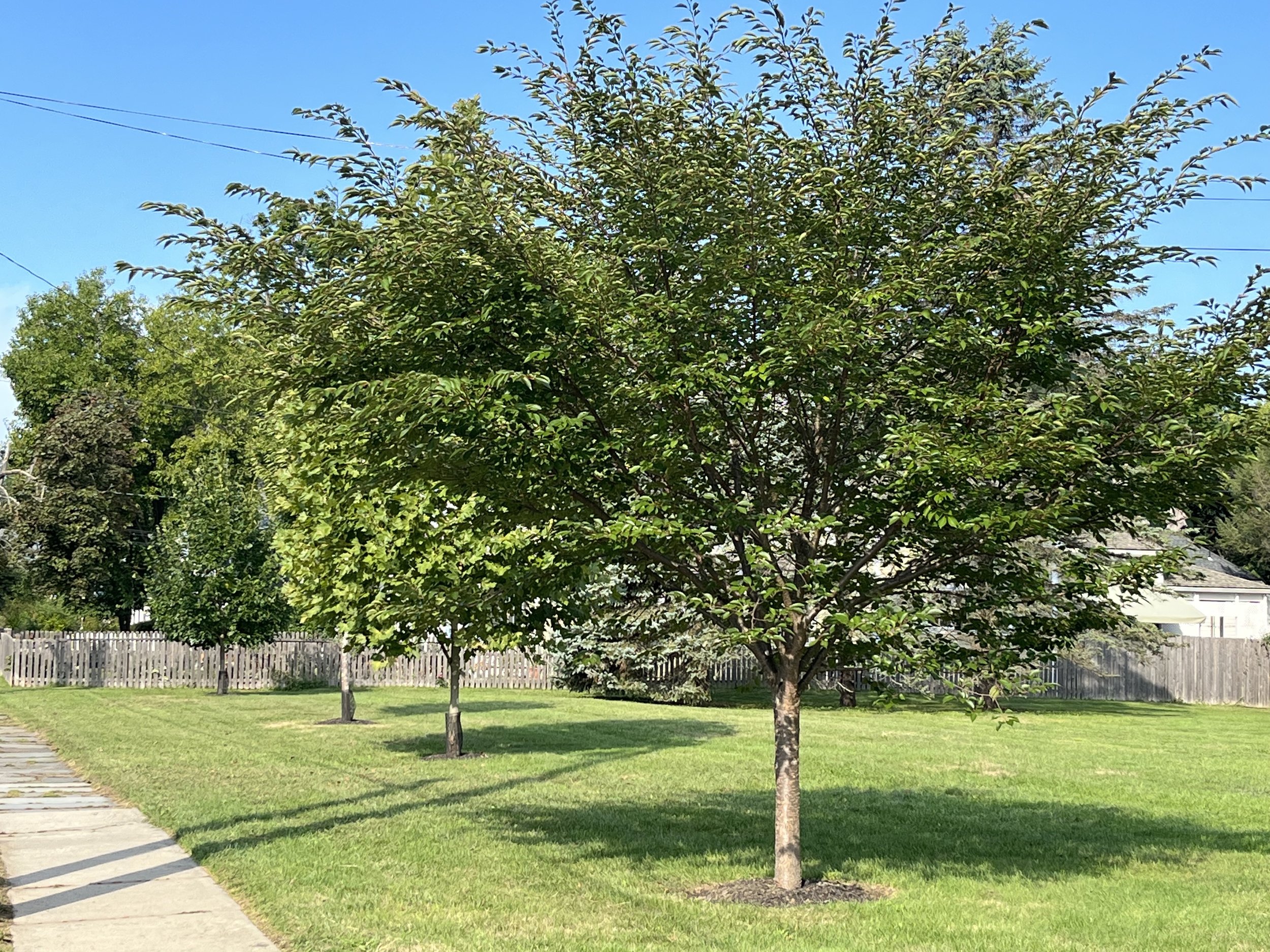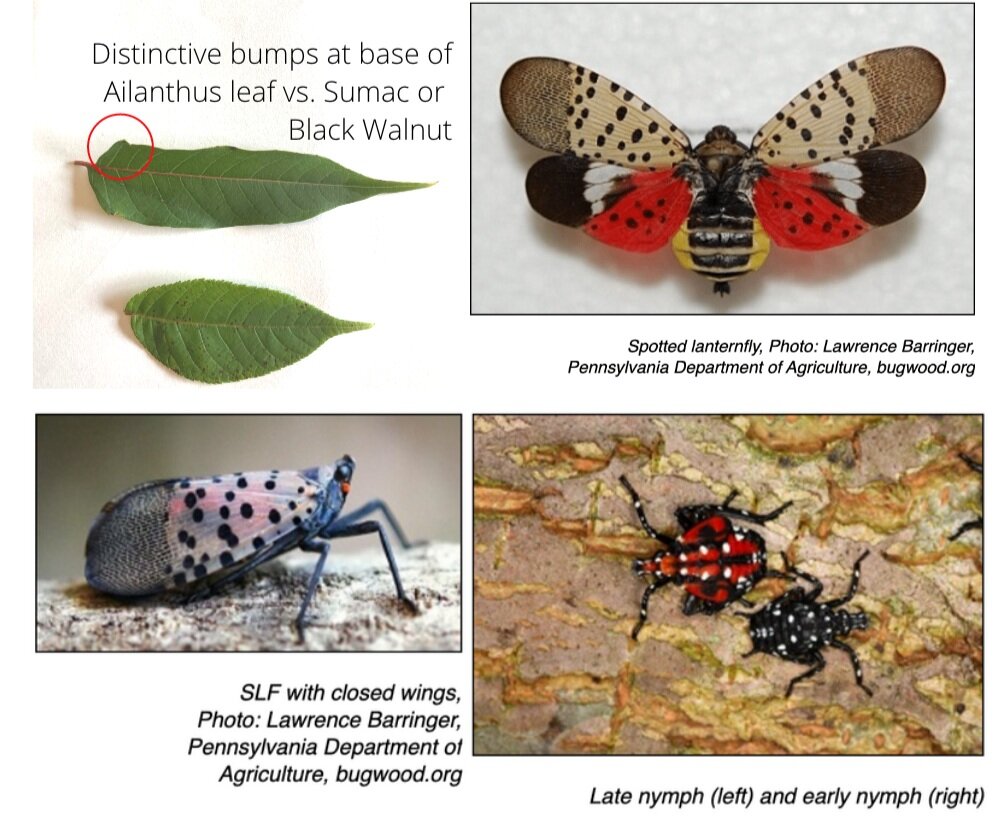
Rhinebeck Village Tree Commission
Legislative intent and purpose.
The Village Board enacts this chapter to achieve the following purposes:
A. Establish and maintain the maximum sustainable amount of tree cover on public and private lands which impact public highways and other public property in the Village;
B. Maintain trees within the Village in a healthy and nonhazardous condition through accepted arboricultural practices;
C. Establish and maintain appropriate diversity in species and age classes within the Village;
D. Protect and enhance the character of the Village by assuring that decisions regarding the care and maintenance of trees are consistent within the Village and consistent with the Village Comprehensive Plan;
E. Prevent destruction or damage to shade, ornamental and evergreen trees and heritage trees by preventing inappropriate cutting of these trees in new subdivisions or other developments within the Village;
F. Prevent soil erosion and provide protection to wetlands, water bodies, watercourses, air quality, vegetation, wildlife and fragile natural resources; and
G. Preserve the natural beauty and community character of the Village.
H. Recognizing that the care and maintenance of street trees is a general benefit to the Village residents by contributing to the overall appearance of the Village; and recognizing that planting solely in the Village right-of-way leads to conflicts with sidewalks, utility wires and street maintenance, the Village Board shall consider alternatives for street tree planting in concert with private property owners in the Village.
The Tree Commission meets the third week of each month. Applications for pruning, removal or planting should be received by the third Monday of each month for review of the Commission. Members may be available for consultation and recommendations for village homeowners related to selection and location of tree plantings and current tree health. For emergency situations, a certified arborist will need to submit a letter to the Village Clerk related to pruning or removal within one week with an explanation of the action taken.
Tree Commission Members
Walter Cotter
Meg Crawford (chair)
Pat Evans
Kris Hall
Andrew Hunter
Tom Johnson
Ric Lewit (Village Board Liaison)
George Weld
Joyce Meisinger
Kurt Quackenbush
Projects:
Montgomery Street
The Tree Commission and volunteers, took down street trees that were dangerous, dying and/or growing up into the utility wires along Montgomery Street, from E Market St to the fork at Springbrook. And, we are planting twice as many as we've taken down, thanks to a grant from the Frost Memorial Fund.
Losing large trees is a shock, but this is a long term decision for the health, safety and beauty of our community and urban forest. In time, the new trees will provide beauty, shade, flowers for pollinators, and carbon sequestration for decades to come.
FAQs:
Q. Why remove so many trees at once?
A. Because Montgomery St is a State Road, we need to coordinate with DOT and carefully plan how to manage traffic and safety. It is best to do this all at once, rather time and time again. We have the grant money from Frost Memorial Fund and want to move according to our grant proposal’s plan. We’ve also already done the work of informing property owners and getting their consent (since they technically own the street trees). The Tree Commission is a volunteer group. To coordinate a project of this size musters a lot of volunteer energy. We are ready and willing to do it now!
Q. Why can’t you plant the new trees now, since many are not going under the wires in the same spots as the eventual removals? And let those grow before taking down the dying trees?
A. Many of the trees slated to be removed are dangerous and could drop limbs on pedestrians or cars. Planting new trees under larger trees doesn’t work because the smaller trees need the sunlight and space to grow. Also consider the root systems underneath and complexities there.
Q. It’s going to be so sad and lacking, without the large trees!
A. Yes, we know! As Tree Commission volunteers we are very passionate about trees as well, and we value how much our tree lined streets add to the character of our beloved village. We’ve been working on this plan for many years. In this case, we are trying to think like a tree: good, solid decision-making, for the long term benefit of all.
In the top image here, you can see an example of a tree that was removed.
These are flowering trees that don’t grow as high, and therefore can be planted under wires.
The Village is recognized by Tree City USA. This is a program sponsored by the National Arbor Day Foundation in cooperation with the USDA Forest Service and the National Association of State Foresters which gives recognition to communities for providing a basic level of human and financial resources to manage their community forests. The Village first earned the title Tree City USA in 2010, and has continuously maintained this designation since.
To view and access valuable data related to tree status including pruning, removal, damage and open areas for planting, visit
I want to remove or prune my Village tree
Only trees within the Right of Way (in the median, or—if in the yard—within 30 feet from the center of the road) require permission from the Village to be pruned or removed. These trees are considered part of the Village’s greater good because they impact the Village’s wellbeing at large by providing shade, cooling, supporting biodiversity and natural beauty. However, Village law states that pruning or removal is the homeowner’s financial responsibility.
If the tree is an urgent hazard or dangerous situation (because of a storm, etc.), contact the Village Clerk, Martina McClinton mmcclinton@villageofrhinebeckny.gov.
Here’s how to request permission to remove or prune your tree within the Right of Way:
Fill out the application through the button below (it asks about the size of tree, which certified/insured arborist will be doing the work, reason for removal, etc.)
Return the filled out application to the Village Clerk, ideally at least 2 weeks prior to the Village Board meeting (2nd Tuesday of each month)
The Tree Commission reviews the application and goes out and looks at the tree
The Tree Commission makes a recommendation to the Village Board, and the Board votes whether to approve or not at their monthly meeting
The process should take no more than 2 to 4 weeks
Tip: if you’re taking down a tree that has benefitted a neighbor, it would be nice for you have a conversation with them!
I’d like a free tree planted in my yard
The Village will pay for and plant street trees that benefit the greater good of the community. This way, the Village trees are enjoyed by everyone—contributing much to what makes Rhinebeck such a lovely place to be.
The Village Tree Commission plants free trees for property owners within the Right of Way (ROW: either in the median, or in your lawn and within 30 ft of the center of the road). Any tree planted deeper into your property Beyond the Right of Way (BROW), will be your property and the Village will have no jurisdiction over it when it comes to future tree removal.
Fall plantings typically take place at the end of October/early November and spring plantings in late April. When the Tree Commission installs a tree/s for village homeowners, the tree is bare root and is carefully planted. An identification tag, stakes, water gaiter and mulch are provided. Tags are an educational resource that identify the tree species.
Tree pruning is available for planted trees by trained Tree Commission Pruning Corps members for the first five years after a planting. Pruning helps “train” the trees so their branches don’t interfere with pedestrians and traffic.
The Village has a unique “Beyond the Right of Way” (BROW) policy, which enables trees to be planted on the owner’s property—with their permission of course. This strategy enables a new generation of trees to mature to full height without interfering with utility wires, reducing the likelihood of down wires from storms and increasing the tree’s health.
You can view a list of Common Tree Plantings here.
The homeowner can have input into which type of tree, but ultimately it’s at the Tree Commission’s discretion which tree is on offer and appropriate to the site.
The homeowner will need to care for the tree for the duration. The homeowner will be asked to water the tree for the first year—the Tree Commission provides a gator bag to be filled once a week. The home owner will need to agree to allow the Tree Commission to remove stakes and wires when it’s time, and prune and train the tree for the first 5 years.
Common Questions
-Construction is planned on my property. Should I take any precautions? Yes! Be cautious about soil compaction such as the location of parking of vehicles near or under trees. Do not pile or store materials near or under trees. Use fencing to protect the area around the tree and discuss any additional protection with the contractor. To protect the root zone of the tree, calculate 1” of tree diameter needs 12’ around the tree.
-How, Why and Where Tree Plantings are Selected?
We use our TreeKeeper inventory and also scout by foot to identify locations in the Village along our streets and in other public spaces that would benefit from a greater tree canopy. We always evaluate the site location where there will be the greatest possible root space, as well as overhead space, to grow without interference. We choose trees that at maturity will offer the greatest environmental, as well as aesthetic benefit to the homeowner and the public that uses our streets and parks. For sustainability, we try to diversify the type of tree that is selected to allow for a range of tree species throughout the village.
-Should I Fertilize My New Tree?
When we plant the new tree, we put a phosphate fertilizer in the hole to aid in root growth. Mulch is added to the area around the tree which over time will break down, adding more organic matter to the root zone and also provides additional nutrients. This layer of mulch helps to retain water, suppress weeds and keeps weed trimmers and mowers away from the trunk. New trees benefit from replenishing mulch up to 3 inches yearly, while assuring that it is not piled up against the trunk. This is often referred to volcano mulching which is to be avoided as this buries the root flare and also encourages disease and decay. Additional fertilizer is not usually needed. Watering regularly during the first growing season is critical and during droughts in successive years.
Low or No Chemical Weed Management
Ban on Spraying Glyphosate (the active ingredient in Roundup™ and other brandnames) on Municipal Properties in the Village
In September 2021, the Rhinebeck Village Board passed a resolution banning the spraying of Glyphosate on municipal properties. This herbicide/pesticide has been linked to cancer in humans and can disrupt the balance of our ecology by harming birds, insects, and plants. The resolution further states that only certified personnel or trained contractors may handle controlled chemicals on municipal property. See also, NY State’s Assembly Bill A732B, which “prohibits the use of glyphosate on state property.” www.nysenate.gov/legislation/bills/2019/A732
Best practices for alternative herbicidal methods:
Spread mulch to suppress weed growth.
Use very strong horticultural vinegar in paved areas.
Mow lawns on a high setting, allowing grass to compete better with weeds.
Weed-whack very short along roadsides once a month, particularly during hot summer months.
Pull out vines or invasive trees by the root. This is the best option before these vines/trees go to seed and are spread by birds. Get them before they’re well established and too difficult to pull out!
Check out Beyond Pesticide’s non-comprehensive list of products they recommend, which are not harmful.
Please Refrain from Spraying Glyphosate (the active ingredient in Roundup™ and other brandnames) on Your Property
While the Village Board’s resolution does not regulate the use of these chemicals on your property, we encourage businesses and residents to refrain from spraying glyphosate products on private property. We want you and our environment to be healthy and safe.
Dig Deeper — There’s Some Complexity When it Comes to Invasives
You may have noticed an invasive tree, Ailanthus (commonly known as Tree of Heaven—such a misleadingly pleasant name!), often found along roadsides and sprouting up in hard-to-get-at spots in your yard and along fence lines. It looks similar to Sumac, but Sumac has distinctive “staghorns” when flowering. In the fall, Sumac turns red but Ailanthus does not.
If you see an Ailanthus sapling, rip it out by its roots before it quickly grows too large. Cutting this tree only spurs new growth. If this is the situation, continue to cut any new growth—over time, the lack of any foliage will starve the plant. Or, you can hire a landscaping professional who is certified to carefully paint concentrated glyphosate on a stump, one of the only other ways to prevent new growth.
Why is this so important? The Tree of Heaven is prime habitat for the Spotted Lantern Fly (SLF), an invasive insect that is migrating to our area, decimating forests in its wake. If you see a SLF, email a photo of it and the location to spottedlanternfly@agriculture.ny.gov
And be sure to squish it!
This summer has seen an outbreak of the nuisance pest Spongy Moth which has caused defoliation of trees and produced large numbers of moths flying during the daytime. The New York Department of Environmental Conservation has produced this fact sheet concerning the damage that the moth may do and steps that individuals can do to limit the moth’s spread and damage.









